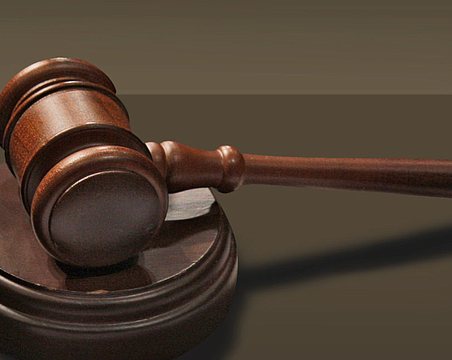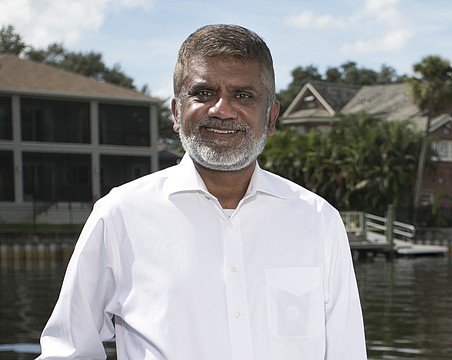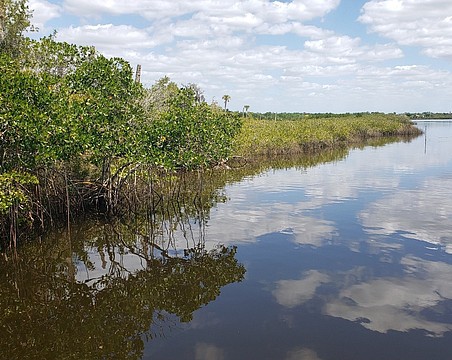Biolife LLC (Innovation Awards)
A revolutionary product that instantly stops bleeding is just what the doctor ordered. It's only one of the innovative aspects of this Sarasota company.
By Kendall Jones
Senior Editor
The product is used by as many as 75% of professional sports teams in the country, as well as a bunch of college and high school teams. Zee Medical wants to get it into the 350,000 occupational first aid kits it has placed in workplaces across the country. CVS Pharmacy sells it, and stores like Wal-Mart, Albertsons and Eckerd Drug are lining up to not just sell it, but to help market it as well. Doctors at Harvard Medical School and Houston's M.D. Anderson Cancer Center give the product high marks.
With less than two years on the market, and less than a year in the high-profile consumer market, QR - Quick Relief - is changing individual habits and entire industries.
Invented and manufactured by Biolife LLC, QR is a combination of potassium salt and resins in a powder form that, when sprinkled on a bleeding wound, instantly stops the bleeding. The product chemically reacts with the blood to act like a plug, forming an immediate scab. The scab actually becomes organic; within about two days, the wound shows no trace of the chemical. The product, a natural oxidizer, keeps bacteria out of the wound and appears to speed up healing.
Of course, QR works to stop basic cuts and scrapes, as well as nosebleeds, which is why it is so popular with sports teams, including the Tampa Bay Lightning, which can shove some QR up a hockey player's nose and send him back in the game seconds later. More significantly, however, QR works on diabetics and others whose wounds don't heal well. It works on people taking blood thinners, hemophiliacs and others whose blood doesn't clot well.
The company has a pile of anecdotes from doctors, sports trainers, medical supply representatives and others: QR stopped the bleeding on an amputated finger; it saved the life of a boy with leukemia; it helped heal a gunshot wound; it stopped bleeding varicose veins and ulcers; it prevented excessive and traumatic bleeding during wound debridements. Even when cauterizing a wound with silver nitrate fails, QR has worked. And the company is just getting started.
Biolife is sitting on a gold mine.
The company was incorporated in August 1999. "It was the marriage of two families," explains Biolife President and Chief Executive Officer Doug Goodman. Two of the owners are Alf Thompson, a chemist, and his father-in-law, Charlie Entenmann, the business genius behind the success of Entenmann's bakery. "In the early 50s, Entenmann's, owned by Charlie's father, was one of those little local buggy bakeries that delivered baked goods with milk. When Charlie was 22 years old, his father died. Charlie could see the future of grocery stores, so with a total education that consisted of nine months of bakery school, Charlie convinced his brothers to mortgage their houses and build that business into the Entenmann's we know today. He is a remarkably brilliant man."
Thompson had invented the potassium salt product, which he and his father-in-law were trying to market in the late 90s. Thompson was attending a conference on alternative energy forms when he met the other half of the Biolife equation, Dr. James Patterson, who is now 82 years old.
"Dr. Patterson is an expert in two fields," says Goodman. "He is the father of water turbidity in the States, and he is an expert on resins, which are little beads used for different applications. The QR product is a combination of the potassium salt and the resins. Dr. Patterson is a diabetic; it takes his blood 21 minutes to coagulate, or clot. He tried it (QR) and found that the resin absorbs the blood like a sponge and the potassium salt fuses it into a hard scab instantly. Dr. Patterson is constantly coming up with new ways to use this product."
The company spent a couple of years in research and development, determining the best use for their combined formula, perfecting the formula and researching the market. In April 2001, they had decided to manufacture and market the product as a blood stoppage product and they moved the company into its Airport Commerce Center location on Tallevast Road in Sarasota to begin manufacturing.
They marketed it to the sports industry before the end of 2001, and the industry gobbled it up. When bleeding athletes previously had to sit out during time-outs or entire periods of the game to get bandaged or sutured, trainers say QR gets athletes right back in the competition after only a few seconds and without the discomfort of bandages. Biolife has video clips from televised professional athletic games, showing basketball players and hockey players running to the sidelines for a quick swab or sprinkle of QR to stop bleeding before hustling back into the game.
Biolife has not made a fortune off the sports industry, but they have used it for tremendous market leverage. "The sports industry is not that big, but it's important for credibility," says Goodman. If the product is good enough for use by the Los Angeles Lakers, it's got to be good enough for the average weekend warrior.
With its sports industry success, Biolife quickly moved into its three other initial markets: health care, occupational and consumer. The health care industry is difficult to crack, the company found, because of the bureaucracy and change-averse nature of many doctors, who were taught to stop bleeding with sutures. But once Harvard Medical School and the Anderson Cancer Center, two of the biggest names in medicine, got on board, doors opened.
"We have close to 200 hospitals right now, but it's only about $150,000 a year business," says Goodman. "With the increasing number of diabetics, wound care centers and nursing homes really like the product. This could be a $7 million to $10 million business, but it will take a long time to develop."
The company had $200,000 revenues its first year. This year, it expects to hit $5 million.
Biolife's got its biggest entry into the occupational market through it relationship with Zee Medical, the largest U.S. distributor of workplace first aid kits and a subsidiary of McKesson Corp., a San Francisco pharmaceutical distributor. Ironically, when Biolife first approached Zee about 18 months ago, Zee rejected QR flat. "But the Biolife way is - that doesn't stop us," Goodman boasts.
Biolife's perseverance and the impulses of Larry Boss, Zee's vice president of sales and marketing, got Zee's attention. When Biolife finally got an audience with Zee executives, Boss pulled a hunting knife out of his pocket and cut himself on the arm, right there in the meeting. Boss, who takes Plavix, a blood thinner, put QR on his fresh cut and it stopped the bleeding in seconds. Boss' response: "I'll be damned."
Today, Zee claims QR is its most successful product launch, voting Biolife its No. 1 Supplier of the Year for 2003. Says Goodman: "This product is changing occupational first aid; it's changing people's habits. And now, it's changing the way Zee does business with its national marketing and accounts. We trained about 50 Zee sites and set up sales contests. We created testimonial programs and point-of-use programs. Zee asked us for a sales aid and Doris (Goodman, Doug's wife and Biolife's vice president of marketing) developed a two-minute CD with animation showing how it works. Zee's representatives can answer basic questions about the product, and to answer more specific questions, they can pop in the CD. Zee is convinced they need QR in their 350,000 first aid kits. Now they want to work with Biolife to get it in the major airlines. One of our managers suggested this would be good in schools, so now Zee is putting together a day care/school kit."
The occupational market, currently a million dollar business for Biolife, is now the company's largest market, and it could stay that way. The occupational area has the potential to bring $10 million to $20 million in business to Biolife.
But Biolife hopes its biggest market will be its newest one - the consumer market. The QR products - UrgentQR, NosebleedQR, SportsQR and Kid'sQR (all essentially the same formula except the Kid's product is gentler) - began appearing on CVS shelves and some Walgreen shelves within the last six months. In 2002, the consumer market was about a $150,000 business for Biolife. By the end of 2003, it will bring Biolife between $1.5 million and $2 million.
In 2004, those numbers will likely triple. Early in 2004, Wal-Mart will partner with Biolife to implement a QR sampling program in its stores and Albertson's will put massive QR displays in its national locations. Goodman says the consumer market could be a $20 million to $40 million market for the company.
The company's innovations don't stop with the existing QR products. Next year, the company will bring attention to new QR products. Biolife is developing a dental product, already through its first phase of clinical testing - the dental product requires FDA approval because it will be used orally. Goodman explains the extraordinary birth of the dental product: "An oral surgeon at Stanford University called us. He was doing oral surgery on a boy with leukemia and cut an artery, which spurts blood. The kid was bleeding out fast, with literally only minutes before he would be dead. They tried traditional hemostats but nothing was working. Desperate, the doctor remembered he had samples of QR on his desk and he told his assistant to run get them. He put QR on the cut artery and the bleeding stopped. This product actually saved a kid's life in 15 seconds. That's pretty amazing. That oral surgeon is now helping us with the clinical trials to get QR approved for dental use."
Next year, the company expects to begin clinical testing on SuperQR, a product with slightly different chemistry from the existing QR products. It is developed to treat massive wounds and will be targeted for use by the military and emergency accident responders like EMTs. By the following year, the company hopes to undertake clinical testing to prove the healing properties of the QR products. For these FDA-required clinical tests, which can be incredibly expensive, Biolife seeks to partner with a more experienced entity with better resources; Harvard is doing the nosebleed studies and Stanford is doing the dental studies.
Meanwhile, back on Tallevast Road, innovation continues. Employee John Hand is working to develop an even better swab for NosebleedQR - one that can hold more product for larger nostrils or nasal cavities.
Biolife's Penn & Teller-like process engineering team, known affectionately around the company only as "Mark and Kelly," is developing new machinery for the company. Mark, an engineering genius, has a slight build and doesn't speak much. Kelly, by far the larger and more gregarious of the two men, has a chemistry background and basically speaks for the team, enthusiastically showing off their inventions.
"There are only three people in the world who know the patented formula for making QR - Alf, and Mark and Kelly," says Goodman. "I don't even know how to make it. But Mark and Kelly do more than cook QR. Individually, they are each really smart and talented. Together, they are brilliant. About two and a half years ago, we decided to become self-sufficient and get our own filling machine instead of contract out to a pharmaceutical company to do filling for us. We put in an order to buy one for $35,000, but it was going to take at least eight weeks for it to be delivered. Mark and Kelly built a filler machine basically over a weekend for only $500. We canceled our order on the $35,000 machine, then that company wanted to come in and patent Mark and Kelly's invention!"
More recently, Biolife was looking at a more sophisticated, higher-speed filling machine that would cost the company $100,000. Mark and Kelly designed their own prototype in short order; it's now being built at a cost to Biolife of only about $2,500. "Mark and Kelly are perfectionists of the Biolife way," says Goodman of the company's dogged determination to persevere and push through the barriers they face.
The "Biolife way" is a well-known mantra within the company walls, one that often brings shock to new employees. The company has broken down functional barriers and hierarchies - there are no prominent offices for top company executives. Every one of the 36 employees is expected to work as a team and contribute to the company's success. There are no layoffs, even in the lowest times, something that surprised the Hispanic women who work in packaging and are accustomed to layoffs.
"We are happy, a team," says Alma, who came to America in 1985 as a 10-year-old migrant farm worker and who now works at Biolife, separating and packaging blister packs of the product. "This is the best company. We are grateful because this is not just a business. They take care of families. And we are empowered. We participate in decision-making." Alma and her colleagues made a suggestion for a packaging improvement that the company is implementing.
Goodman says the company has three standards for its employees: "First, what do they teach me? Second, what do they do to build up their teammates, not themselves? What have they done to make the team better? Third, what do they accomplish? But if they do it on their own, that's a negative. Not everyone works well in that kind of environment. But at Biolife, we can do very little here on our own. We are a team and we need help, because we are breaking through barriers in the market. The biggest challenge we face is changing the mindset of the market. We have to make people think differently about what to do when someone is bleeding."





